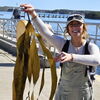Processing Your Payment
Please do not leave this page until complete. This can take a few moments.
- News
-
Editions
-
- Lists
-
Viewpoints
-
Our Events
-
Event Info
- Business Leaders of the Year Reception 2025
- Women's Leadership Forum 2025
- On the Road with Mainebiz in Bethel
- Health Care Forum 2025
- On The Road with Mainebiz in Greenville
- On The Road with Mainebiz in Waterville
- Small Business Forum 2025
- Outstanding Women in Business Reception 2025
- On The Road with Mainebiz in Bath
- 60 Ideas in 60 Minutes Portland 2025
- 40 Under 40 Awards Reception 2025
- On The Road with Mainebiz in Lewiston / Auburn
- 60 Ideas in 60 Minutes Bangor 2025
Award Honorees
- 2025 Business Leaders of the Year
- 2024 Women to Watch Honorees
- 2024 Business Leaders of the Year
- 2023 NextUp: 40 Under 40 Honorees
- 2023 Women to Watch Honorees
- 2023 Business Leaders of the Year
- 2022 NextUp: 40 Under 40 Honorees
- 2022 Women to Watch Honorees
- 2022 Business Leaders of the Year
-
-
Calendar
-
Biz Marketplace
- News
- Editions
- Lists
- Viewpoints
-
Our Events
Event Info
- View all Events
- Business Leaders of the Year Reception 2025
- Women's Leadership Forum 2025
- On the Road with Mainebiz in Bethel
- Health Care Forum 2025
- On The Road with Mainebiz in Greenville
- + More
- On The Road with Mainebiz in Waterville
- Small Business Forum 2025
- Outstanding Women in Business Reception 2025
- On The Road with Mainebiz in Bath
- 60 Ideas in 60 Minutes Portland 2025
- 40 Under 40 Awards Reception 2025
- On The Road with Mainebiz in Lewiston / Auburn
- 60 Ideas in 60 Minutes Bangor 2025
- - Less
Award Honorees
- 2025 Business Leaders of the Year
- 2024 Women to Watch Honorees
- 2024 Business Leaders of the Year
- 2023 NextUp: 40 Under 40 Honorees
- 2023 Women to Watch Honorees
- 2023 Business Leaders of the Year
- + More
- 2022 NextUp: 40 Under 40 Honorees
- 2022 Women to Watch Honorees
- 2022 Business Leaders of the Year
- Nomination Forms
- Calendar
- Biz Marketplace
Maine Food Insider: 'Glam cam' for clams reveals the lives of harvesters
 Photo / Bridie McGreavy
A clammer in March 2015 at sunrise in Frenchman Bay, where it was so cold he had to dig through ice covering the mudflat to get at the clams. He was the first 'test shoot' for the 'Clam Cam' project, during which the researchers learned it's better to mount the video camera on the clammer's chest than his head to get smoother video.
Photo / Bridie McGreavy
A clammer in March 2015 at sunrise in Frenchman Bay, where it was so cold he had to dig through ice covering the mudflat to get at the clams. He was the first 'test shoot' for the 'Clam Cam' project, during which the researchers learned it's better to mount the video camera on the clammer's chest than his head to get smoother video.
Clams are a mainstay at Maine restaurants for tourists and locals alike, but how many people think about how the meat they’re dipping into butter got onto their plates?
It’s a big question, as harvested soft-shelled clams were the state’s third most valuable commercial fishery in 2016 at $15.7 million, behind lobsters and Atlantic herring, according to the Maine Department of Marine Resources.
A project at the University of Maine in Orono called “Clam Cam” aims to tell that story through video and photos of harvesters raking through heavy, wet sand and finding clams to put into their basket.
The university had harvesters from Freeport to Roque Bluffs wear microphones and GoPros to capture the sights and sounds of their jobs from their point of view: the rakes, buckets, hods, mesh bags and gloves they use as they scrape through dense mud and breath heavily from exhaustion. The videos might reveal a technique or two for newcomers to get through the caked mud to the clams.
Walking on exposed intertidal mud for the first time, Bridie McGreavy, who grew up in southwest Maine, said she felt she was entering a “world that was so foreign, so beautiful.”
The idea for Clam Cam hatched when McGreavy, an assistant professor in the department of communication and journalism at UMaine, in collaboration with PhD student Tyler Quiring and UMaine graduate Carter Hathaway acted on a harvester’s suggestion that the public could learn a lot about his livelihood by vicariously “digging clams” by watching the videos.
One harvester took to the mission like a professional journalist. He put on the video camera, hit the record button and started talking.
“It turned out he was narrating his digging on the camera, talking to the eventual viewer and describing what it was like to dig, how hot it was, how he finds clams and drains the water from the hole he’s working on and why clamming is so important to him,” Quiring said in a statement. “We were surprised and excited about this spontaneous relationship that was forming between clammer and viewer.”
McGreavy said clam harvesters face environmental challenges such as ocean acidification, predatory green crabs and harmful red tides. There also is physical pain from the hard labor involved in harvesting even a few pounds of clams, and with the pain also comes substance abuse.
McGreavy also said some clammers experience bias, lower levels of education and lack of access to technology in rural and remote areas.
The project is supported by a National Science Foundation Award and a grant from the University of Maine Humanities Center.
DOWNLOAD PDFs










Comments